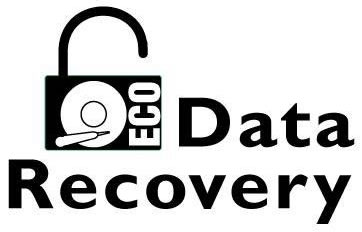RAID DATA RECOVERY SERVICE
RAID 1 – RAID 0 – RAID 5 – RAID 10
ALL MANUFACTURERS OF NAS DEVICES
FLORIDA AND NATIONWIDE FOR 25+ YEARS

“You may only have ONE chance to recover your RAID Data”
Trust the professionals at ECO Data Recovery!
First Things First…
My RAID Array failed, What should I do?
1) Turn off your RAID
2) Do not attempt to use RAID
3) Do not attempt any repair or rebuild.
(This may cause permanent data loss or corruption.)
Why Should ECO Data Recovery be your Choice for ALL RAID ARRAYS Data Recovery Service In South Florida?
ECO Data Recovery offers FIRM UP-FRONT PRICES for all RAID Servers!
Hard drives can suffer from physical, mechanical hard drive crashes, operating system failure, viruses, or file system corruption. Any one of these instances could easily result in the inability to access your files.
We have all state-of-the-art Data Recovery equipment and proprietary software and technologies to recover your RAID data from failed SATA, SAS, SSD, and SCSI Hard Drives.
ECO Data Recovery has extensive knowledge with all major hard drive manufacturers such as Western Digital, Seagate, Hitachi, Toshiba and all NAS and SAN servers.
With our extensive over 24 years experience in South Florida hard drive repair and hard drive recovery, we we know what to do and how to do it.
WE RECOVER YOUR RAID FOR LESS!!

Important procedures taken at Eco Data Recovery to
recover your RAID Data recovery:
1. Non-destructive procedures are only used meaning that we never take chances in causing the hard drive to be damaged in the process of data recovery. We only use proven methods to recover your data at all times.
2. We provide several options on how to resolve the problem. We will be very honest in giving you the advantages and disadvantages of each option. For example, if you need to get your files very quickly, this may cost you more because we would need to use additional resources for this. Remember to ask us about this so you so there are no issues.
4. We are very transparent about our success rate. Be careful about any other business telling you that their company has a rate of more than 85% in recovering the data you lost. Success rates change depending on the situation or state of the hard drive.
5. ECO Data Recovery is located in South Florida for over 24 years. Experience working with various operating systems. This includes RAID, Windows, MAC, desktops, laptops, SSD and portable USB drives.
We recover data from the most complex RAID ARRAYS. We have experience in recovering data from all hardware and virtual RAID configurations.
Popular RAID Array for Recovery:
-
QNAP data recovery
-
JBOND data recovery
-
MS Hyper-V data recovery
-
Equal logic data recovery
-
Citrix data recovery
-
Sun data recovery
-
SNAP server recovery
-
Drobo data recovery
-
Netapp data recovery
-
Synology Data Recovery
What is a RAID?
(Redundant Array of Independent Disks)
RAID Data Recovery – RAID 0:
All the disk devices are organized alternatively so that blocks are taken equally from all disks alternatively, in order to reach higher efficiency.
Since the probability of finding a block of a file is identical for all disks, there are force to work simultaneously thus making the performance of the Meta disk almost 10 times that of a single disk.
Raid Data Recovery – RAID 1:
In this mode, the goal is to reach the highest security of the data. Blocks of data are duplicated in all physical disks (each block of the virtual disk has a duplicate in each of the physical disks). This configuration provides 10 times the reading performance of a single device, but it degrades writing operations. Read operations can be organized to read 10 blocks simultaneously, one from each device at a time. Similarly when writing 1 block it has to be duplicated 10 times, one for each physical device. There is no advantage in this configuration regarding storage capacity.
RAID Data Recovery RAID 4:
The ultimate goal is to balance the advantages of the type RAID 0 and RAID 1.Data is organized mixing both methods. The physical 1 to N-1 are organized in striping mode (RAID 0) and the Nth stores the parity of the individual bits
corresponding to blocks 1 to N-1. If any of the disks fails, it is
possible to recover by using the parity information on the Nth hard disk.
Efficiency during read operations is N-1 and during write operations is 1/2 (because writing a data block now involves writing also to the parity disk). In order to restore a broken hard disk, one only has to re-read the information and re-write it (it reads from the parity disk but it writes to the newly install hard disk).
RAID Data Recovery RAID 5:
This type is similar to RAID 4, except that now the information of the parity disk is spread over all the hard disks (no parity disk exists). It allows reducing the work load of the parity disk, that in RAID 4 it had to be accessed for every write operation (now the disk where parity information for a track is stored differs for every track).
RAID Data Recovery RAID 10 (0+1):
RAID 0+1: striped sets in a mirrored set (minimum four disks; even number of disks) provides fault tolerance and improved performance but increases complexity. The key difference between a RAID 1 + 0, is that RAID 0 + 1 creates a second striped set to mirror a primary striped set. The array continues to operate with one or more drives failed in the same mirror set, but if drives fail on both sides of the mirror the data on the RAID system is lost.
COVID VIRUS TEMPORARY POLICY CHANCE
Every Hard Drive we receive and ship will be sanitized upon receiving and shipping
All orders will receive a prepaid shipping label to our Lab in Jupiter, Florida. With this label you can drop off – without
standing in line at post office or UPS Store.
ECO Data Recovery
500 N. Old Dixie Hwy. Suite 2
Jupiter, FL 33458
561-691-0019 / 800-339-3412
